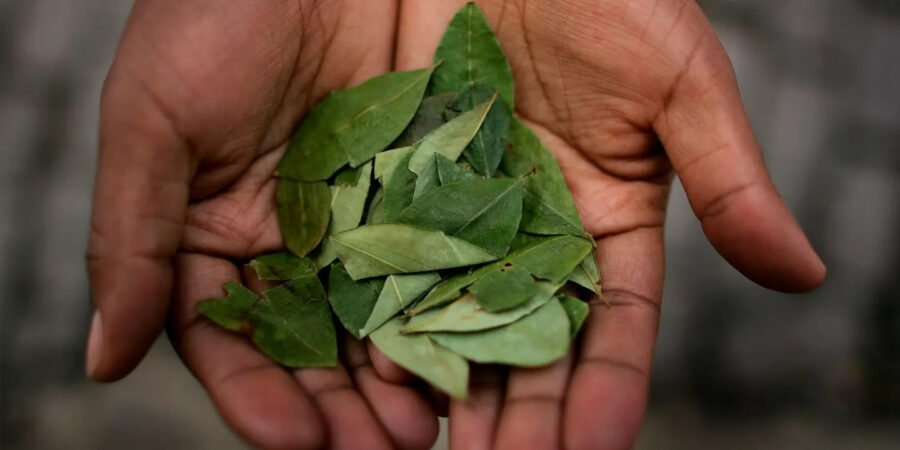Skin (Latin: Cutis) is our largest organ and therefore is also naturally the source of most diseases. Skin diseases can be complex to diagnose. They can be manifestations of underlying illness, or something strange deforming skin itself. Humans know what they want or don’t want to happen on their skin. Skin itself couldn’t care less.
Some years ago I saw a patient in her thirties with a strange condition. All over her body she had oval areas of slack skin surrounded by normal skin. In these focal areas of flaccid skin, old age had arrived. The rest of the skin was perfect. Such a disorder in dermatology is called—much to the delight of trivia buffs—
“Anetoderma”. We know it is more common in women aged between 20-40 and be caused by conditions such as Lyme Disease, Lupus, thyroid problems, certain auto-immune diseases, some medications and even the overuse of drugs such as cocaine. In this patient’s medical history there was nothing of the sort other than perhaps a little excessive consumption of Coca-Cola which I had dismissed as a cause. But the strangeness of the case had stayed with me, especially as anetoderma is a very rare condition.

I thought about this case again when I was in the Maldives at a literary festival recently alongside three Booker Prize winners—Howard Jacobsen, Damon Galgut and Geetanjali Shree. It was an amazing festival, and the smallness meant one got to know the participants and the audience well. The reason I thought about Coca-Cola was because at one of the dinners, I remember someone ordering Diet Coke and I pointed out that the drink may indeed have lower calories, but one can still develop diabetes, and associated skin effects such as glycation that can cause skin to age. The sooner I had said this, my mind went back to this case—could my patient’s fondness for fizzy cola drinks have been the cause of her anetoderma?
I had written about Coke in my book, The Genetics of Health (Simon and Schuster), which was the book that featured at this festival—and I am pleased to say it sold out after my session. Because we use the same taste receptors to sense artificial sweeteners (unlike hummingbirds), our bodies deal with sugars and artificial sweeteners the same way i.e., you still end up with adverse metabolic effects that too much sugar causes. As I had written in my book:
“Many carbonated drinks contain caffeine, and when caffeine is present, manufacturers automatically increase sugar content, as caffeine dulls sugar taste receptors. The caffeine content of drinks like Coca-Cola mean that they have to be made super sweet for you to be able to taste the sweetness. We also know that the younger a person is introduced to a sugary diet, the more addictive it becomes.”
The addition of caffeine to pop soda drinks is no accident. It is science being commandeered for corporate purposes. The inclusion of caffeine allows one to add more sugar to addictive levels. What kind of a company would do this? A cynic suggested that after all the Coca-Cola corporation even had added cocaine in its original formula. But was this true? Or is this an urban myth that Coke once really contained cocaine? It turns out to be a fascinating tale.
You see, Coca-Cola contains “Coca” and “Cola”, and did originally contain cocaine. As the US government website Justthinktwice.gov that educates people about drugs states:
The drink was invented in 1885 by John Pemberton, a pharmacist from Atlanta, Georgia, who made the original formula in his backyard. Pemberton’s recipe contained cocaine in the form of an extract of the coca leaf, which inspired the “Coca” part of the beverage’s name. The “Cola” comes from the kola nut (which contains caffeine, another stimulant).
At the time it was invented, cocaine used to be commonly used in medications such as cough syrups which was what Pemberton was interested in creating. He marketed it as a ”brain tonic and intellectual beverage” that later ended up an iconic drink owned by a major corporation. Decades later, as governments all over the world began to crackdown on opiates, cocaine was banned along with the importation of coca leaves. However, the Coca-Cola Company still needed coca leaves for its secret formula. Rather conveniently, Article 27 of the United Nation’s 1961 Single Convention on Narcotic Drugs (page 35) has this clause:
“The Parties may permit the use of coca leaves for the preparation of a flavouring agent, which shall not contain any alkaloids, and, to the extent necessary for such use, may permit the production, import, export, trade in and possession of such leaves,”
And so the Coca-Cola continued the importation of coca leaves into America as a flavouring agent. While the United States was pressuring Peru and other countries to eradicate the coca plant and substitute it with other crops, this champion of global capitalism somehow managed to maintain its supply. However, to have a strategic degree of separation, the importing was done by an obscure New Jersey corporation called the Stepan Company. This was no small quantity of coca; and an even bigger masterclass in political risk-management. According to a report in the 1980s in the New York Times, imports of coca by Stepan Chemicals have ranged up to 588 metric tons a year, according to figures from the US government’s drug agencies.
At this nondescript Stepan factory, coca leaves are used to produce a ‘de-cocainised’ flavour that goes into the famous drink. And interestingly, the Stepan corporation has an exclusive licence to import coca leaves into the US on behalf of the Coca-Cola Company. This only attracted some media very recently because Stepan’s licence had almost expired, and needed renewal. It was duly extended by the authorities without much publicity. But there was an obvious fact: Coke does not contain cocaine now, but coca leaves can still produce cocaine. Importation was done as a flavouring agent, and that’s where the official scrutiny ended.
Coca-Cola in fact produces as much as $3 billion in pure cocaine every year and sells it to one of the world’s largest opioid manufacturers, Mallinckrodt, which in turn markets it as a numbing agent and topical anaesthetic for doctors and dentists. It appears that Mallinckrodt, a pharmaceutical company from St. Louis is the only one licensed to purify the product for medicinal use.
This supply chain continues to this day. And the only importer of coca leaves into America and the only purifier and producer of cocaine are also both uniquely associated with the Coca-Cola corporation.
As Bart Elmore (The Joe Rogan Podcast #1722), author of books like Citizen Coke and Seed Money, and the recipient of the 2022 Dan David Prize wrote in a blog published by Oxford University Press (OUP), the Coca-Cola company has relied on the federal government to get whatever it wanted:
“The answer, I discovered, had to do with the company’s secret formula: not its unique recipe, but its peculiar business strategy for making money—what I call Coca-Cola capitalism.”
In my book, Skin, a Biography (4th Estate) I wrote about the skin-brain axis, and how skin and nerve cells developed at the same time from the neuroectoderm. We now know that neurochemical responses to intermittent high sugar consumption mimic the effects of opiate drugs. Studies on positron emission tomography (PET) and functional magnetic resonance imaging (fMRI) scans in humans have shown that overeating behaviours, such as too much sugar that can lead to obesity, may have similarities to drug dependence. In hindsight, the diagnosis may have been obvious, even though there were no specific treatment options. It was both straightforward science and a case of dermatological intrigue. Most skin diseases are rapid spot diagnoses. But sometimes medicine, like most interesting sciences or arts, can be charmingly imprecise.
THE END
Written By
Dr Sharad Paul
Dr Sharad Paul is an award winning, world renowned recognised skin-cancer expert and thought-leader.






